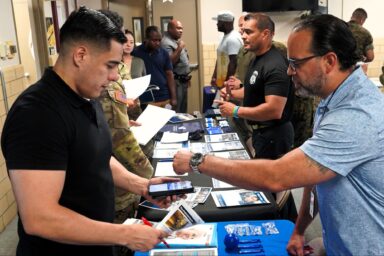When Republicans and Unions Got Along ; The Future of Labor in Post-Pandemic America; and More Picks 9/7
The Future of Labor in Post-Pandemic America (Peg)
From the American Prospect: “On the one hand, the coronavirus has thrown a spotlight on tens of millions of workers who are usually invisible to the media, upper-middle-class professionals, and political decision-makers. Suddenly, health care aides, farmworkers, food processors, supermarket employees, delivery drivers, transit workers, warehouse workers, hands-on public employees, and many others have been deemed ‘essential’ by both the government and the public. At the same time, millions of ‘nonessential’ blue-collar retail and hospitality workers who can’t work from home have abruptly been laid off. In consequence, there has been a wave of sympathy and support for both groups, a strong sentiment that they deserve safer working conditions, paid sick leave, higher pay, and health insurance.”
Unions Organize in Response to COVID-19 Safety Concerns (Peg)
From the Society of Human Resource Management: “Unions with resources to increase their membership ranks have had significant organizing opportunities during the pandemic as workers focus on safety concerns. Other unions, however, have seen their funds dry up in the recession.”
Collective Bargaining in the Aftermath of COVID-19 (Peg)
The authors write, “Even with the effects of COVID-19 still reverberating across the economy, collective bargaining agreements will expire, new units will gain bargaining rights, and the National Labor Relations Act (NLRA) will still require good faith bargaining by both parties. The financial turbulence caused by COVID-19 will heighten tensions and create significant disruption in upcoming labor negotiations. In this article, we identify and explore issues stemming from the parties’ experiences with COVID-19 that we expect to arise during labor negotiations.”
Who Needs Unions, Anyway? We All Do. (Dana)
The authors write, “Child labor laws have been passed, a minimum wage has been set, overtime laws are in place, and there is a federal agency dedicated to occupational safety and health, OSHA. ‘So, what do we need unions for?’ This is a common refrain uttered by opponents of unions as well as many workers who have never belonged to a union. … Since the arrival of COVID-19 earlier this year, the need for unions has become more apparent than ever. From the very start, essential workers in retail, warehouses, assembly lines, nursing homes, and hospitals were some of the most vulnerable, typically working with woefully inadequate safety protections and often at wages that do not begin to reflect the value their work adds to society each day.”
When Republicans and Unions Got Along (Dana)
The author writes, “In September 1952, Dwight D. Eisenhower spoke to a convention of labor leaders and told them that before joining the Army, he took a job at a dairy plant where ‘I worked 84 hours a week on the night shift from 6 to 6, seven nights a week.’ Recognizing how extreme that was, Eisenhower said, in a nod to labor, ‘In the years since, unions, cooperating with employers, have vastly improved the lot of working men and women.’”
America Still Needs Unions in the Digital Gilded Age (Dana)
From the Seattle Times: “Before it was the end-of-summer holiday with cookouts and sales. Before former House Majority Leader Eric Cantor tweeted that it ‘celebrate(s) those who have taken a risk, worked hard, built a business and earned their own success.’ Or before press releases used it as a hook for, say, a study on the number of Washington workers in high-risk jobs because of the pandemic (900,000). … Before all of this, Labor Day was about unions.”
Why Police Unions Are Not Part of the Labor Movement (Dana)
From the Palm Beach Post: “In the wake of George Floyd’s death at the hands of a Minneapolis police officer, news reports have suggested that police unions bear some of the responsibility for the violence perpetrated against African Americans. Critics have assailed these unions for protecting officers who have abused their authority. … Many people who support labor unions in principle, who view them as a countervailing force against the power of employers, have only recently come to view police unions as problematic — as entities that perpetuate a culture of racism and violence.”
Keystone XL Union Agreements Put Pressure on Pipeline Foe Biden (Peg)
The author writes, “TC Energy Corp. has reached agreements with four labor unions to build the controversial Keystone XL oil pipeline — a move that could amplify political pressure on Joe Biden, who has threatened to rip up permits for the project even as he courts blue-collar workers.”
Moms, Here’s What All Your Pandemic Invisible Labor Is Actually Worth (Peg)
The author writes, “In a recent study from the Kaiser Family Foundation, more women than men reported being concerned about coronavirus exposure because they couldn’t afford to stay home and miss work. A larger number of women also reported being part-time workers, a chronic issue for working mothers as it typically means lower pay and less stability that is only made worse in times of economic downturn. Another study, out of Northwestern University, noted that while in previous recessions men have experienced higher job losses, the pandemic is operating differently. Slightly more women than men work in the sectors hardest hit: retail, restaurant work, hotels and hospitality.”
A Quaker School Promoted Liberal Values. Then Its Teachers Unionized. (Peg)
The author writes, “In the spring of last year, over 80 percent of faculty and staff members voted to unionize, with no objection from the school. Union representatives were at the table as contract talks began at the end of 2019 and in July of this year to negotiate the layoffs of approximately 30 teachers because of the Covid-19 pandemic. Two weeks after those negotiations ended, teachers and staff members received notice on Aug. 14 that the school was moving to dismantle the union. The administration said a union went against Quaker values, which emphasize direct communication and consensus.”


